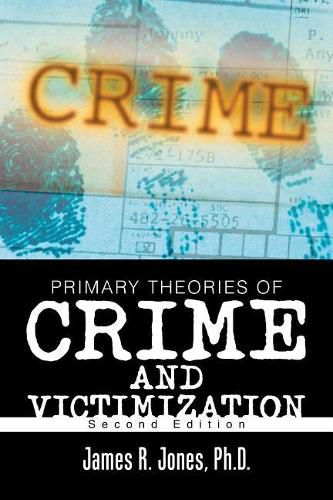Readings Newsletter
Become a Readings Member to make your shopping experience even easier.
Sign in or sign up for free!
You’re not far away from qualifying for FREE standard shipping within Australia
You’ve qualified for FREE standard shipping within Australia
The cart is loading…






This title is printed to order. This book may have been self-published. If so, we cannot guarantee the quality of the content. In the main most books will have gone through the editing process however some may not. We therefore suggest that you be aware of this before ordering this book. If in doubt check either the author or publisher’s details as we are unable to accept any returns unless they are faulty. Please contact us if you have any questions.
This text focuses on the history of criminology, which includes the criminological time periods, persons most associated with each era, and their contentions and contributions. The earlier crime research epochs that are the concentration of the beginning of the text are the classical school of criminology, positivist criminology, sociological criminology (also known as the Chicago school), conflict criminology, and developmental criminology. It also concentrates on the ways crime is recorded in the United States and the strengths and weaknesses of each method. The focal point of the crime recording section of the text is on the Uniform Crime Report (UCR), National Crime Victimization Survey (NCVS), and self-report surveys. The theories of crime and delinquency that are examined are strain theory, differential association theory, conflict theory, social bonding theory, rational choice theory, social structure theory, social disorganization theory, cultural deviance theory, differential association theory, differential reinforcement theory, labeling theory, and theories of victimization. Finally, the text concludes with chapters on causes of violent crimes, juvenile delinquency, white-collar crime, and terrorism.
$9.00 standard shipping within Australia
FREE standard shipping within Australia for orders over $100.00
Express & International shipping calculated at checkout
This title is printed to order. This book may have been self-published. If so, we cannot guarantee the quality of the content. In the main most books will have gone through the editing process however some may not. We therefore suggest that you be aware of this before ordering this book. If in doubt check either the author or publisher’s details as we are unable to accept any returns unless they are faulty. Please contact us if you have any questions.
This text focuses on the history of criminology, which includes the criminological time periods, persons most associated with each era, and their contentions and contributions. The earlier crime research epochs that are the concentration of the beginning of the text are the classical school of criminology, positivist criminology, sociological criminology (also known as the Chicago school), conflict criminology, and developmental criminology. It also concentrates on the ways crime is recorded in the United States and the strengths and weaknesses of each method. The focal point of the crime recording section of the text is on the Uniform Crime Report (UCR), National Crime Victimization Survey (NCVS), and self-report surveys. The theories of crime and delinquency that are examined are strain theory, differential association theory, conflict theory, social bonding theory, rational choice theory, social structure theory, social disorganization theory, cultural deviance theory, differential association theory, differential reinforcement theory, labeling theory, and theories of victimization. Finally, the text concludes with chapters on causes of violent crimes, juvenile delinquency, white-collar crime, and terrorism.